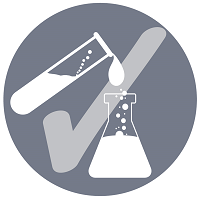Formulation and Delivery
Symposium: Enabling Technologies and Materials for Formulation Innovation 1
H-Bonded Organic Frameworks as Ultrasound-Programmable Delivery Platform
Tuesday, November 11, 2025
10:00 AM - 10:30 AM CT
Location: Stars at Night B1

Huiliang (Evan) Wang, PhD
Assistant Professor
University of Texas At Austin
Austin, Texas
Speaker(s)
The precise control of mechanochemical activation within deep tissues using non-invasive ultrasound holds profound implications for advancing our understanding of fundamental biomedical sciences and revolutionizing disease treatments. However, a theory-guided mechanoresponsive materials system with well-defined ultrasound activation has yet to be explored. Here we present the concept of using porous hydrogen-bonded organic frameworks (HOFs) as toolkits for focused ultrasound (FUS) programmably triggered drug activation to control specific cellular events in the deep brain, through on-demand scission of the supramolecular interactions. A theoretical model is developed to potentially visualize the mechanochemical scission and ultrasound mechanics, providing valuable guidelines for the rational design of mechanoresponsive materials to achieve programmable control. To demonstrate the practicality of this approach, we encapsulate the designer drug clozapine N-oxide (CNO) into the optimal HOF nanocrystals for FUS-gated release to activate engineered G-protein-coupled receptors in the ventral tegmental area (VTA) of mice and rats and hence achieve targeted neural circuit modulation even at depth 9 mm with a latency of seconds. This work demonstrates the capability of ultrasound to precisely control molecular interactions and develops ultrasoundprogrammable HOFs to non-invasively and spatiotemporally control cellular events,
thereby facilitating the establishment of precise molecular therapeutic possibilities.
thereby facilitating the establishment of precise molecular therapeutic possibilities.
Learning Objectives:
- Design various types of H-bonded organic framework nanoparticles with tunable ultrasound sensitivity and stability for ultrasound-triggered drug release.
- Learn how to apply H-bonded organic framework nanoparticles for ultrasound-activated drug release in in vitro neuronal activation and in vivo genetically targeted deep brain neuromodulation.
- Understand the application of ultrasound-activated H-bonded organic framework nanoparticles and chemogenetics to control animal behaviors related to addiction and depression.

